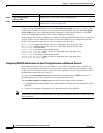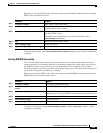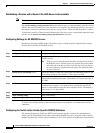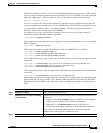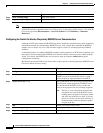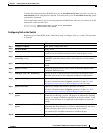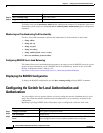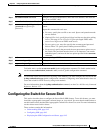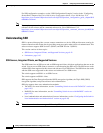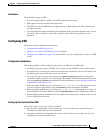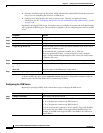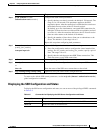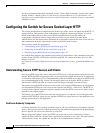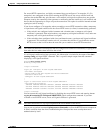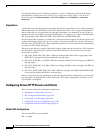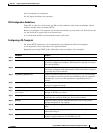
9-42
Catalyst 2960 and 2960-S Switch Software Configuration Guide
OL-8603-09
Chapter 9 Configuring Switch-Based Authentication
Configuring the Switch for Secure Shell
For SSH configuration examples, see the “SSH Configuration Examples” section in the “Configuring
Secure Shell” chapter of the Cisco IOS Security Configuration Guide, Cisco IOS Release 12.2:
http://www.cisco.com/en/US/products/sw/iosswrel/ps1835/products_configuration_guide_chapter0918
6a00800ca7d5.html
Note For complete syntax and usage information for the commands used in this section, see the command
reference for this release and the command reference for Cisco IOS Release 12.2:
http://www.cisco.com/en/US/products/sw/iosswrel/ps1835/products_command_reference_book09186a
0080087e33.html
Understanding SSH
SSH is a protocol that provides a secure, remote connection to a device. SSH provides more security for
remote connections than Telnet does by providing strong encryption when a device is authenticated. This
software release supports SSH Version 1 (SSHv1) and SSH Version 2 (SSHv2).
This section consists of these topics:
• SSH Servers, Integrated Clients, and Supported Versions, page 9-42
• Limitations, page 9-43
SSH Servers, Integrated Clients, and Supported Versions
The SSH feature has an SSH server and an SSH integrated client, which are applications that run on the
switch. You can use an SSH client to connect to a switch running the SSH server. The SSH server works
with the SSH client supported in this release and with non-Cisco SSH clients. The SSH client also works
with the SSH server supported in this release and with non-Cisco SSH servers.
The switch supports an SSHv1 or an SSHv2 server.
The switch supports an SSHv1 client.
SSH supports the Data Encryption Standard (DES) encryption algorithm, the Triple DES (3DES)
encryption algorithm, and password-based user authentication.
SSH also supports these user authentication methods:
• TACACS+ (for more information, see the “Controlling Switch Access with TACACS+” section on
page 9-10)
• RADIUS (for more information, see the “Controlling Switch Access with RADIUS” section on
page 9-18)
• Local authentication and authorization (for more information, see the “Configuring the Switch for
Local Authentication and Authorization” section on page 9-40)
Note This software release does not support IP Security (IPSec).



